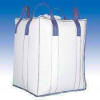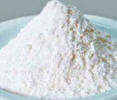| Anmol Chemicals is the pioneer manufacturers of Sodium Iodide & Potassium Iodide , Pharmaceutical Excipients Fragrance Food & Flavor chemicals in India. We offer Halal and Kosher Sodium Iodide & Potassium Iodide made in an ISO9001, ISO22000 (FSSC22000) cGMP and GLP certified facility. Our group has several manufacturing facilities spread across the world, supported by toll manufacturers and representatives in UAE, Europe, USA, China and has several associated manufacturing facilities spread across India. All the Information on Physics, Chemistry, Applications, Uses and Technology on Manufacture of Sodium Iodide & Potassium Iodide is in these pages. |
| The units have one or more of the certifications like FDA GMP, ISO 9001, ISO 22000, HACCP, REACH, Kosher & Halal |
CAS Number 7681-82-5 (anhydrous); 13517-06-1 (dihydrate), Sodium Iodide & CAS Number 7681-11-0, Potassium Iodide BP Ph Eur USP Analytical Reagent FCC Food Grade Manufacturers
Sodium Iodide CAS Number 7681-82-5 (anhydrous); 13517-06-1 (dihydrate), EINECS EC Number 231-679-3, Molecular Weight 149.89 , Molecular Formula: NaI
Potassium Iodide CAS Number 7681-11-0, EINECS EC Number 231-659-4, Molecular Weight 166, Chemical Formula KI
This is a summary computer translation of our website. For Details and Safety Data Sheet of Sodium Iodide & Potassium Iodide Manufacturers, please visit our Home Page
Specifications of Sodium Iodide USP Grade
Sodium Iodide contains not less than 99.0 percent and not more than 101.5 percent of NaI, calculated on the anhydrous basis.
Identification: A solution (1 in 20) responds to the tests for Sodium and for Iodide.
Alkalinity: Dissolve 1.0 g in 10 mL of water, and add 0.15 mL of 0.10 N sulfuric acid: no red color is produced by the addition of 1 drop of phenolphthalein TS.
Water: not more than 2.0%.
Iodate: It meets the requirements of the test for Iodate under Potassium Iodide, 100 mg of Sodium Iodide being used in the control.
Thiosulfate and barium: It meets the requirements of the test for Thiosulfate and barium under Potassium Iodide.
Potassium: A solution of 1.0 g in 2 mL of water yields no precipitate with 1.0 mL of sodium bitartrate.
Heavy metals: Dissolve 2.0 g in 25 mL of water: the limit is 0.001%.
Limit of nitrate, nitrite, and ammonia: Add 5 mL of 1 N sodium hydroxide and about 200 mg of aluminum wire to a solution of 1.0 g of Sodium Iodide in 5 mL
of water, contained in a test tube of about 40-mL capacity. Insert a pledget of purified cotton in the upper portion of the test tube, and place a piece of moistened
red litmus paper over the mouth of the tube. Heat in a steam bath for 15 minutes: no blue coloration of the paper is discernible.
Sodium Iodide BP Grade Ph Eur Specifications
DEFINITION
Content
99.0 per cent to 100.5 per cent (dried substance).
CHARACTERS
Appearance: White or almost white, crystalline powder or colourless crystals, hygroscopic.
Solubility: Very soluble in water, freely soluble in ethanol (96 per cent).
IDENTIFICATION
A. Solution S (see Tests) gives the reactions of iodides.
B. Solution S gives the reactions of sodium.
TESTS
Solution S: Dissolve 10.0 g in carbon dioxide-free water R prepared from distilled water R and dilute to 100 ml with the same solvent.
Appearance of solution: Solution S is clear (2.2.1) and colourless.
Alkalinity: To 12.5 ml of solution S add 0.1 ml of bromothymol blue solution R1. Not more than 0.7 ml of 0.01 M hydrochloric acid is required to change the colour of the indicator.
Iodates: To 10 ml of solution S add 0.25 ml of iodide-free starch solution R and 0.2 ml of dilute sulphuric acid R and allow to stand protected from light for
2 min. No blue colour develops.
Sulphates: Maximum 150 ppm.
Dilute 10 ml of solution S to 15 ml with distilled water R.
Thiosulphates: To 10 ml of solution S add 0.1 ml of starch solution R and 0.1 ml of 0.005 M iodine. A blue colour is produced.
Iron: Maximum 20 ppm.
Dilute 5 ml of solution S to 10 ml with water R.
Heavy metals: Maximum 10 ppm.
12 ml of solution S complies with test A. Prepare the reference solution using lead standard solution (1 ppm Pb) R.
Loss on drying: Maximum 3.0 per cent, determined on 1.00 g by drying in an oven at 105 °C for 3 h.
Sodium Iodide ACS Analytical Reagent Grade Specifications
REQUIREMENTS
Assay: Minimum 99.5% NaI
pH of a 5% solution:
6.0-9.0 at 25C
MAXIMUM ALLOWABLE
Insoluble matter: 0.01%
Chloride and bromide (as Cl): 0.01%
Iodate (IO3): 3 ppm
Nitrogen compounds (as N): 0.002%
Phosphate (PO4):
0.001%
Sulfate (SO4):
0.005%
Barium (Ba):
0.002%
Heavy metals (as Pb):
5 ppm
Iron (Fe):
5 ppm
Calcium (Ca):
0.002%
Magnesium (Mg):
0.001%
Potassium (K):
0.01%
Potassium Iodide USP Specifications
KI -- 166.00
Potassium iodide -- [CAS Number 7681-11-0]
Potassium Iodide contains not less than 99.0 percent and not more than 101.5 percent of KI, calculated on the dried basis.
Identification: A solution of it meets the requirements of the tests for Potassium and for Iodide.
Alkalinity: Dissolve 1.0 g in 10 mL of water, and add 0.1 mL of 0.1 N sulfuric acid and 1 drop of phenolphthalein TS: no color is produced.
Loss on drying: Dry it at 105C for 4 hours: it loses not more than 1.0% of its weight.
Iodate: Dissolve 1.1 g in sufficient ammonia- and carbon dioxide-free water to obtain 10 mL of solution, and transfer to a color-comparison tube. Add 1 mL of starch TS and 0.25 mL of 1.0 N sulfuric acid, mix, and compare the color with that of a control containing, in a similar volume, 100 mg of Potassium Iodide, 1 mL of standard iodate solution [prepare by diluting 1 mL of potassium iodate solution (1 in 2500) with water to 100 mL], 1 mL of starch TS, and 0.25 mL of 1.0 N sulfuric acid. Any color produced in the solution of the test specimen does not exceed that in the control: not more than 4 µg per g is found.
Limit of nitrate, nitrite, and ammonia: To a solution of 1 g in 5 mL of water contained in a test tube of about 40-mL capacity add 5 mL of 1 N sodium hydroxide and about 200 mg of aluminum wire. Insert a pledget of purified cotton in the upper portion of the test tube, and place a piece of moistened red litmus paper over the mouth of the tube. Heat the test tube and its contents in a steam bath for 15 minutes: no blue coloration of the paper is discernible.
Thiosulfate and barium: Dissolve 0.5 g in 10 mL of ammonia- and carbon dioxide-free water, and add 2 drops of 2 N sulfuric acid: no turbidity develops within 1 minute.
Heavy metals: Dissolve 2.0 g in 25 mL of water: the limit is 0.001%.
Potassium Iodide BP Ph Eur Specifications
KI -- 166.0 -- CAS Number 7681-11-0
Content: 99.0 per cent to 100.5 per cent (dried substance).
CHARACTERS
Appearance: White or almost white powder or colourless crystals.
Solubility: Very soluble in water, freely soluble in glycerol, soluble in ethanol (96 per cent).
IDENTIFICATION
A. Solution S (see Tests) gives the reactions of iodides (2.3.1).
B. Solution S gives the reactions of potassium (2.3.1).
TESTS
Solution S: Dissolve 10.0 g in carbon dioxide-free water R prepared from distilled water R and dilute to 100 ml with the same solvent.
Appearance of solution: Solution S is clear and colourless.
Alkalinity: To 12.5 ml of solution S add 0.1 ml of bromothymol blue solution R1. Not more than 0.5 ml of 0.01 M hydrochloric acid is required to change the colour of the indicator.
Iodates: To 10 ml of solution S add 0.25 ml of iodide-free starch solution R and 0.2 ml of dilute sulphuric acid R and allow to stand protected from light for 2 min. No blue colour develops.
Sulphates: Maximum 150 ppm.
Dilute 10 ml of solution S to 15 ml with distilled water R.
Thiosulphates: To 10 ml of solution S add 0.1 ml of starch solution R and 0.1 ml of 0.005 M iodine. A blue colour is produced.
Iron: Maximum 20 ppm.
Dilute 5 ml of solution S to 10 ml with water R.
Heavy metals: Maximum 10 ppm.
12 ml of solution S complies with test A. Prepare the reference solution using lead standard solution (1 ppm Pb) R.
Loss on drying: Maximum 1.0 per cent, determined on 1.00 g of previously powdered substance by drying in an oven at 105C for 3 h.
POTASSIUM IODIDE IP SPECIFICATIONS
KI -- Molecular Weight 166.00
Category: Antithyroid; antifungal; expectorant.
Description: Colourless crystals or white powder; odourless
Solubility: Very soluble in water; freely soluble in glycerin; soluble in ethanol (95%).
STANDARDS
Potassium Iodide contains not less than 99.0 per cent and not more than 100.5 per cent of KI, calculated with reference to the dried substance.
Identification: A 10% w/v solution in carbon dioxide-free water (solution A) gives the reactions of potassium salts and of iodides.
Alkalinity: To 10 ml of solution A add 0.2 ml of 0.01M sulphuric acid; no colour is produced on addition of a drop of phenolphthalein solution. .
Clarity and colour of solution: Solution A is clear and colourless.
Arsenic: Dissolve 5.0 g in 50 ml of 'water and 12 ml of stannated hydrochloric acid AsT. The resulting solution complies with the limit test for arsenic (2 ppm).
Heavy metals: Not more than 10 ppm, determined on 2.0 g
Iron: Solution A complies with the limit lest for iron (20 ppm).
Barium: Dissolve 0.5 g in 10 ml of water and add 1 ml of dilute sulphuric acid; no turbidity develops within one minute.
Specifications of Potassium Iodide FCC Food Grade
KI Formula wt 166.00
CAS 7681-11-0
DESCRIPTION
Potassium Iodide occurs as hexahedral crystals, either transparent and colorless or somewhat opaque and white, or as a white, granular powder. It is stable in dry air but slightly hygroscopic in moist air. One gram is soluble in 0.7 mL of water at 25°, in 0.5 mL of boiling water, in 2 mL of glycerin, and in 22 mL of alcohol.
Function: Nutrient.
REQUIREMENTS
Identification:
A. A 1:10 aqueous solution responds to the tests for Potassium and for Iodide.
B. The pH of a 1:20 aqueous solution is between 6 and 10.
Assay: Not less than 99.0% and not more than 101.5% of KI after drying.
Iodate: Not more than 4 mg/kg.
Lead: Not more than 4 mg/kg.
Loss on Drying: Not more than 1%.
Nitrate, Nitrite, and Ammonia: Passes test.
Thiosulfate and Barium: Passes test.
Specifications of Potassium Iodide Analytical Reagent Grade Chemical
KI -- Formula Weight 166.00
CAS Number 7681-11-0
REQUIREMENTS
Assay: Minimum 99.0% KI
pH of a 5% solution: 6.0-9.2 at 25C
MAXIMUM ALLOWABLE
Insoluble matter: 0.005%
Loss on drying at 150C: 0.2%
Chloride and bromide (as Cl): 0.01%
Iodate (IO3): 3 ppm
Nitrogen compounds (as N): 0.001%
Phosphate (PO4): 0.001%
Sulfate (SO4): 0.005%
Barium (Ba): 0.002%
Heavy metals (as Pb): 5 ppm
Iron (Fe): 3 ppm
Calcium (Ca): 0.002%
Magnesium (Mg): 0.001%
Sodium (Na): 0.005%
Exports to USA, Canada, UAE, Dubai, South Africa, Tanzania, Kenya, Nigeria, Egypt, Uganda, Turkey, Mexico, Brazil, Chile, Argentina, Europe Netherlands, Italy, Spain, Germany, Portugal, France, Malaysia, Indonesia, Thailand, Korea, Japan, etc.
Sodium Iodide & Potassium Iodide Manufacturers:
Anmol Chemicals
S-8, SARIFA MANSION, 2ND FLANK ROAD, CHINCHBUNDER, MUMBAI 400009, INDIA
TEL: (OFFICE) 91-22-23770100, 23726950, 23774610, 23723564. FAX: 91-22-23728264
e-mail: anmolc@mtnl.net.in
Copyright and Usual Disclaimer is Applicable. 17 February, 2022




